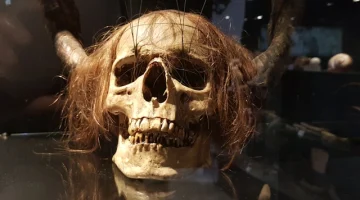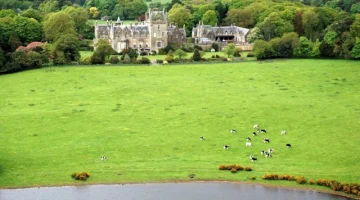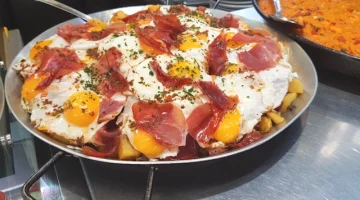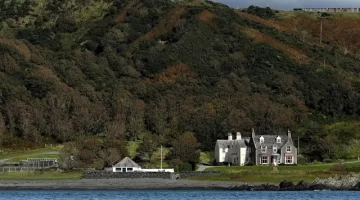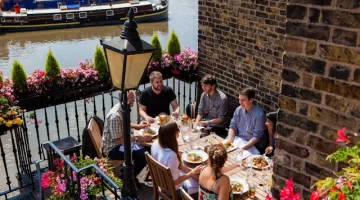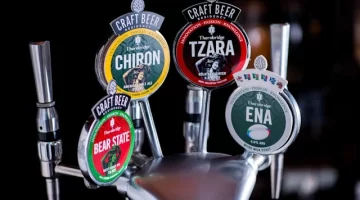On the Winchester Watercress Way
Mike Gerrard walks the Watercress Way near Winchester, along the River Itchen.
‘Ere’s yer salory and watercreases.
That, according to Peter Ackroyd’s London, is what the street sellers of the capital used to cry when watercress was the medieval version of fast food, sold in bunches for people to nibble as they walked along.

What spinach was to Popeye, watercress was to soldiers in ancient Greece, where the general Xenophon used to feed it to them as a tonic. The herbalist Culpepper reckoned it was good for cleansing the blood, and Liz Hurley says she has six bowls of watercress soup a day to help keep her looks. Quite impressive, for something we tend to take for granted as little more than a bit on the side. The watercress, I mean, not Liz Hurley.
We’d been to Winchester before, and enjoyed a stunningly lovely walk along the River Itchen to Alresford. Just outside the town we’d seen some strange-looking beds of green plants being cultivated, and discovered that Alresford was the centre of the British watercress industry. From here watercress by the trainload was taken to the markets of London, and on around the country. With the launch of the Winchester Watercress Way, combining walks, drives, bike and horse trails with the best of local food and drink, it was definitely time for a return visit.

Fortified by the full English breakfast, we stepped out of the car at Easton to be greeted by the full English countryside smell. Cows looked at us as we walked along the lane, as if they’d never seen tourists before, and given how little appreciated this part of Britain is, maybe they hadn’t. Hawthorns were blossoming in the hedgerows, and vivid yellow cowslips lined the verge. We crossed a field that was thick with daisies, buttercups and dandelions, a magical English meadow, and went down to the River Itchen.

Here the river was wide, and the water so clear you could see a stickleback at fifty paces. It’s these pure waters that watercress likes, with a purity and constant temperature that comes from being filtered over chalk. Two mallards swam by with their ducklings, and a swan was sticking its long neck under the water, foraging on the river bed. Fish are jumping, and the cowslips are high. So are we, just from the pleasure of being alone in the English countryside, as if we’d stepped back to the 1950s.

We pass through the village of Martyr Worthy, and the church of St Swithun, thinking forty more days of this glorious sunshine would be very welcome indeed. The path here is part of St Swithun’s Way, and the Watercress Tour takes advantage of the many long-distance paths that criss-cross near Winchester: the Pilgrims’ Way, the South Downs Way and the Wayfarers’ Walk among them.
St Swithun’s Way leads past Comfrey Cottage, which looks like Miss Marple ought to live there and where a fluffy white cat came out to say hello to us.

We walk through Itchen Abbas and Itchen Stoke, where we veer off the path to take a quick look at the watercress beds. Back on it we see more swans, yellow wagtails, brimstone butterflies, moorhens and coots. It’s only when we approach our lunchtime target at Ovington, two relaxing slow hours after the start, that we finally see another person – a fisherman.

Why Ovington? Because here is possibly the best pub in the world, The Bush Inn, hidden at the end of a winding lane and sitting right by the river, which flows by serenely. A fountain plays a gentle melody, and a moorhen does whatever moorhens do. Cream cheese and watercress sandwiches are on the menu, and a pint or two of Wadsworth’s Summersault bitter convince me that we’ve died and gone to heaven.
But eventually we need to get back to planet earth, to the car, though repeating the walk is no great hardship. We then drive for a while before a sign for the Wickham Vineyard calls out to us. I’m glad we listen. Their wines, we discover, are served in the House of Commons, and I’m stunned by the quality of their pinot noir. Sadly, this being an English pinot noir, I’m also stunned by the price and instead buy a walnut liqueur. It’s then hi-ho for the open road back to Winchester, where the cathedral has turned to honey in the early evening glow.

Later I was nibbling yet more watercress with my wild boar sausages and thyme mash at the Forte Kitchen. It does have a deliciously peppery taste, ideal with a meaty sausage. I was sure I was gaining in wit, wisdom, beauty and strength as well, although that might have been something to do with the bottle of Bordeaux too.
See the Watercress Way and Visit Winchester websites.





